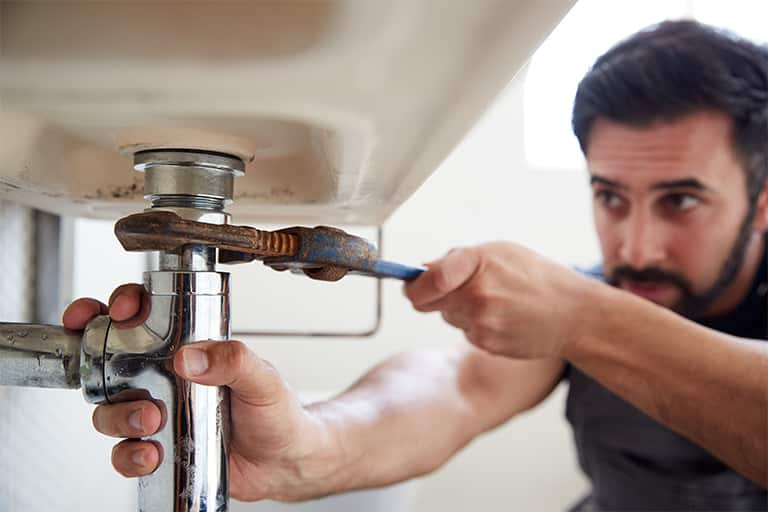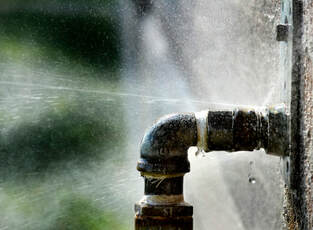6 Ways to Locate Concealed Water Leaks in Your House
6 Ways to Locate Concealed Water Leaks in Your House
Blog Article
This great article following next in relation to Top leak detection hacks is exceptionally informative. Don't skip it.

Early discovery of dripping water lines can reduce a prospective disaster. Apart from saving you money, it will reduce the stress and also stress. The moment you find a leakage, calling your plumber for fixings is the most effective option. Nevertheless, some tiny water leakages might not be visible. If you can not discover it with your nude eyes, here are some hacks that assist.
1. Analyze the Water Meter
Checking it is a guaranteed way that helps you uncover leaks. If it moves, that indicates a fast-moving leak. This suggests you may have a sluggish leak that could even be below ground.
2. Inspect Water Consumption
Assess your water costs and track your water consumption. As the one paying it, you must see if there are any discrepancies. If you identify sudden changes, despite your intake being the same, it implies that you have leakages in your plumbing system. Keep in mind, your water expense should fall under the exact same array on a monthly basis. An unexpected spike in your expense shows a fast-moving leak.
A stable boost every month, even with the same routines, reveals you have a slow leak that's also gradually escalating. Call a plumber to thoroughly check your property, specifically if you feel a warm location on your flooring with piping beneath.
3. Do a Food Coloring Test
When it involves water usage, 30% originates from commodes. Examination to see if they are running appropriately. Decline specks of food shade in the container as well as wait 10 mins. If the shade somehow infiltrates your dish throughout that time without flushing, there's a leak between the storage tank and dish.
4. Asses Outside Lines
Do not forget to examine your outdoor water lines too. Test faucets by connecting a garden hose pipe. Needs to water leak out of the link, you have a loose rubber gasket. Change this as well as make sure all links are limited. It will certainly aid obtain it skillfully analyzed as well as maintained yearly if you've got a lawn sprinkler system. One little leak can lose lots of water as well as surge your water expense.
5. Analyze the situation and inspect
Property owners ought to make it a practice to check under the sink counters and also inside cupboards for any bad odor or mold development. These 2 warnings indicate a leak so prompt attention is required. Doing regular examinations, even bi-annually, can save you from a significant trouble.
Inspect for stainings and deteriorating as a lot of pipes and devices have a life expectancy. If you believe dripping water lines in your plumbing system, don't wait for it to intensify.
Early discovery of leaking water lines can mitigate a prospective catastrophe. Some little water leakages may not be visible. Examining it is a guaranteed means that aids you find leakages. One tiny leakage can lose heaps of water as well as increase your water bill.
If you presume dripping water lines in your plumbing system, don't wait for it to intensify.
WARNING SIGNS OF WATER LEAKAGE BEHIND THE WALL
PERSISTENT MUSTY ODORS
As water slowly drips from a leaky pipe inside the wall, flooring and sheetrock stay damp and develop an odor similar to wet cardboard. It generates a musty smell that can help you find hidden leaks.
MOLD IN UNUSUAL AREAS
Mold usually grows in wet areas like kitchens, baths and laundry rooms. If you spot the stuff on walls or baseboards in other rooms of the house, it’s a good indicator of undetected water leaks.
STAINS THAT GROW
When mold thrives around a leaky pipe, it sometimes takes hold on the inside surface of the affected wall. A growing stain on otherwise clean sheetrock is often your sign of a hidden plumbing problem.
PEELING OR BUBBLING WALLPAPER / PAINT
This clue is easy to miss in rooms that don’t get much use. When you see wallpaper separating along seams or paint bubbling or flaking off the wall, blame sheetrock that stays wet because of an undetected leak.
BUCKLED CEILINGS AND STAINED FLOORS
If ceilings or floors in bathrooms, kitchens or laundry areas develop structural problems, don’t rule out constant damp inside the walls. Wet sheetrock can affect adjacent framing, flooring and ceilings.
https://www.servicemasterbyzaba.com/blog/how-to-detect-water-leakage-in-walls/

As a person who reads on Detecting hidden plumbing leaks, I figured sharing that excerpt was smart. Sharing is good. Helping others is fun. We cherish reading our article about Top leak detection hacks.
Report this page